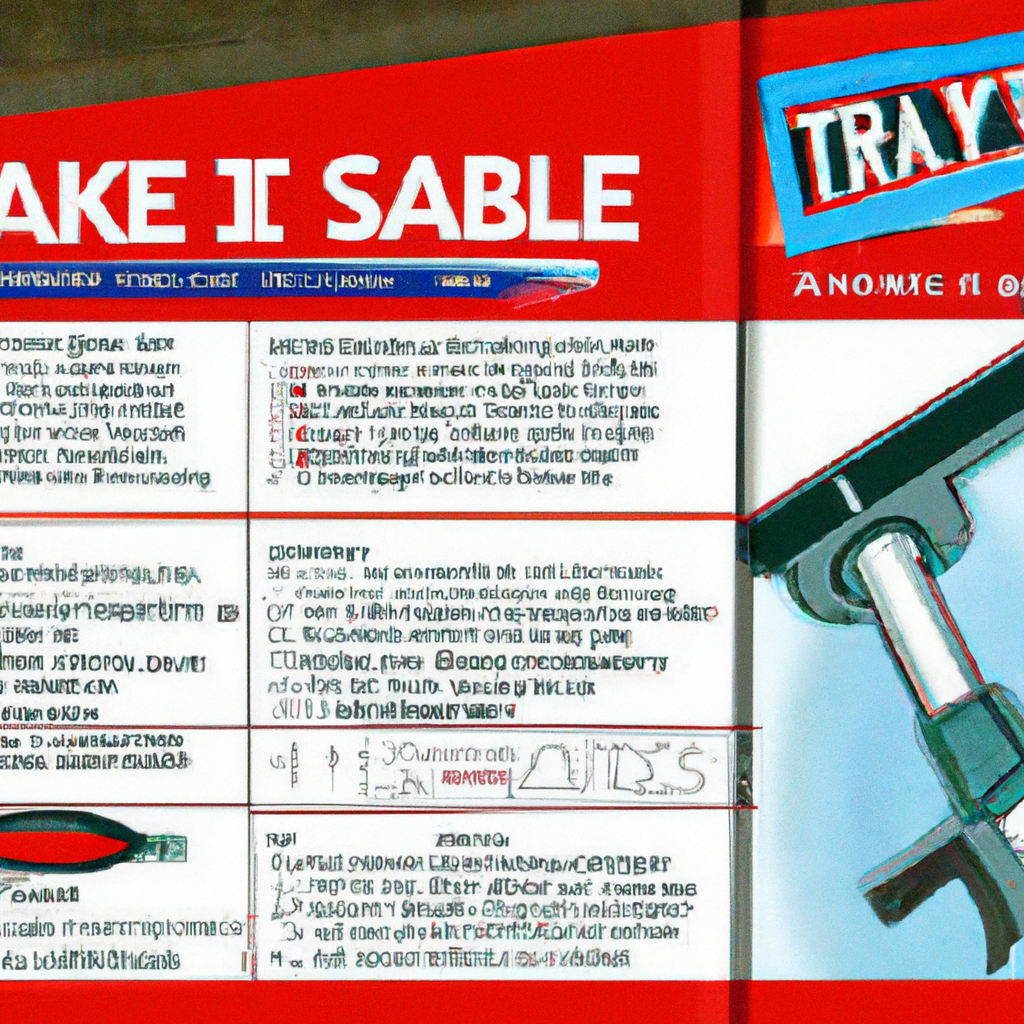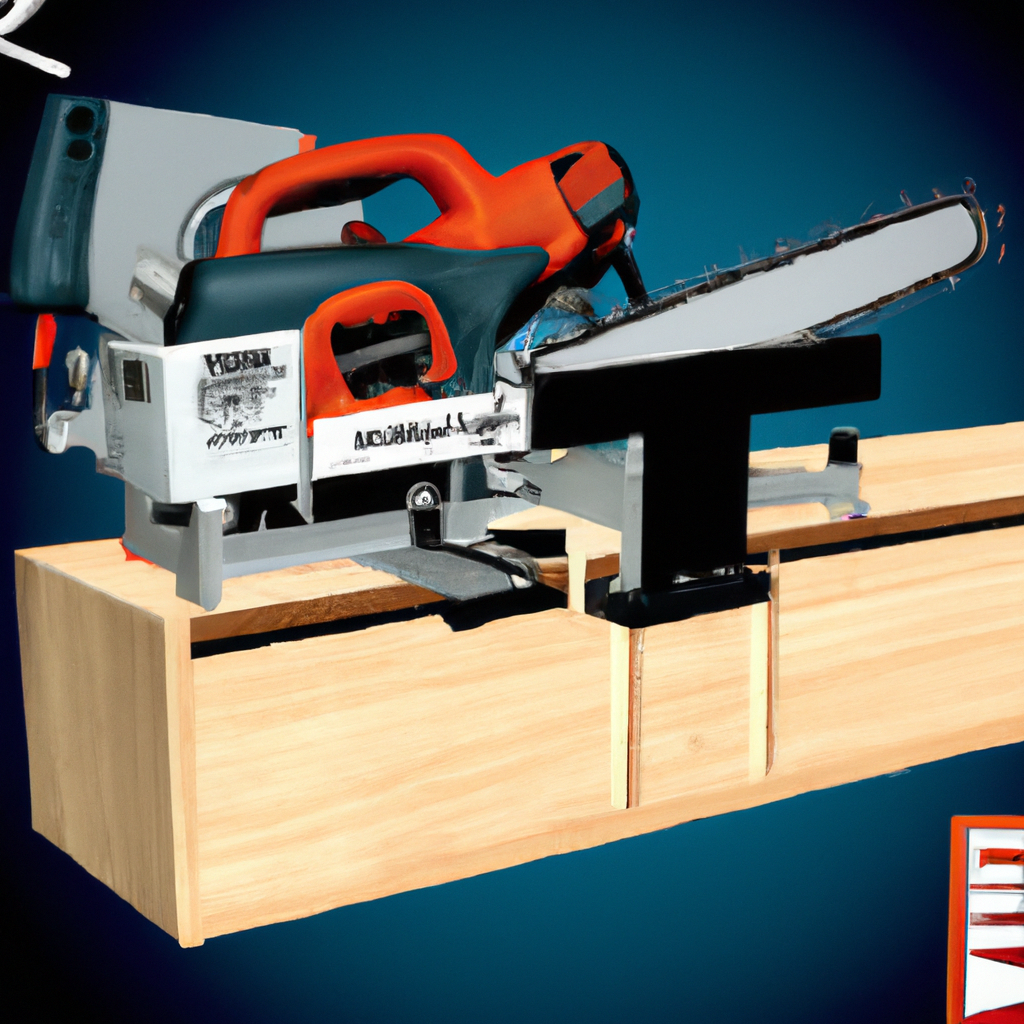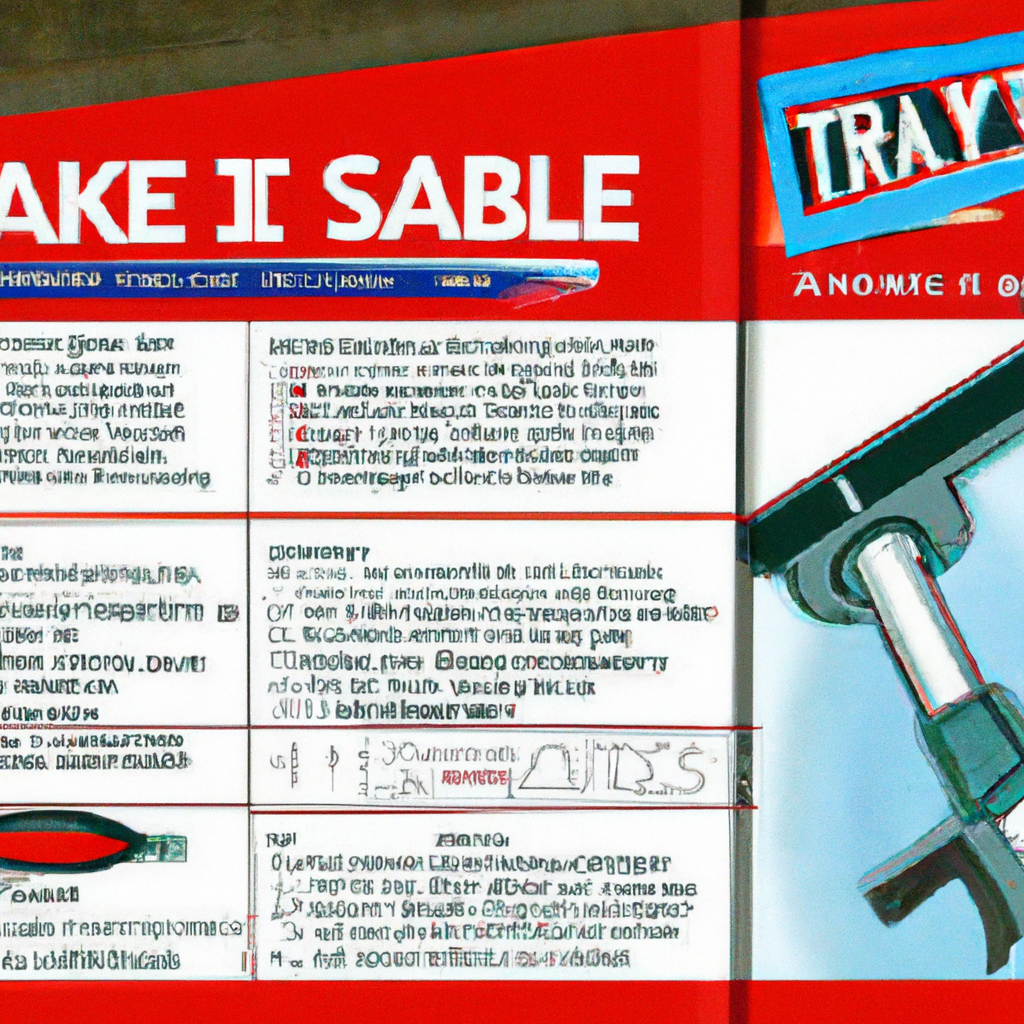In this article, you will discover essential tips on how to use a table saw safely. Whether you’re a seasoned woodworker or just starting out, understanding the proper techniques and precautions when using a table saw is crucial to prevent accidents and ensure a successful project. From wearing protective gear to maintaining a clean work area, these guidelines will empower you to confidently and safely operate a table saw, allowing you to unleash your creativity and craftsmanship without compromising your well-being. So, let’s delve into the world of table saw safety and unlock the potential of this powerful tool!

Choosing the Right Table Saw
Choosing a table saw for your needs
When it comes to choosing a table saw, it’s important to consider your specific needs and requirements. Are you a professional woodworker or a DIY hobbyist? Will you be using the table saw for small projects or large-scale construction? Determining the purpose of your table saw will help you narrow down the options.
Considerations for safety features
Safety should be your top priority when selecting a table saw. Look for models that offer safety features such as blade guards, anti-kickback pawls, and a riving knife. These features help to prevent accidents and protect you from potential injuries while operating the table saw.
Understanding the different types of table saws
There are several types of table saws available, each with its own advantages and limitations. The three main types are contractor saws, cabinet saws, and hybrid saws. Contractor saws are portable and ideal for job site use, while cabinet saws are more robust and suitable for professional woodworking shops. Hybrid saws combine the features of both contractor and cabinet saws, making them a versatile option for various woodworking needs.
Preparing the Work Area
Clearing the workspace
Before using your table saw, it’s crucial to clear the work area of any clutter or debris. Remove any unnecessary tools, materials, or objects that may obstruct your movement or disrupt the cutting process. A clean and organized workspace ensures efficient and safe operation of the table saw.
Ensuring proper lighting
Sufficient lighting is essential to ensure accuracy and visibility during cutting tasks. Make sure your work area is well-lit, either by natural light or artificial lighting sources. This will help you clearly see the cutting line and make precise cuts without straining your eyes.
Accounting for ventilation
Proper ventilation in the work area is necessary to reduce the risks associated with dust and fumes. Ensure that there is adequate airflow to prevent the accumulation of sawdust and maintain a healthy breathing environment. Consider using fans or opening windows and doors to improve ventilation in the workshop.
Basic Safety Equipment
Eye protection
Protecting your eyes is crucial when using a table saw. Wear safety glasses or goggles that provide adequate coverage and impact resistance. This will shield your eyes from flying debris and prevent potential eye injuries that can result from wood chips or sawdust.
Hearing protection
Table saws produce loud noise levels that can cause long-term hearing damage. To protect your hearing, wear appropriate ear protection such as earmuffs or earplugs while operating the table saw. This will help reduce the risk of noise-induced hearing loss and ensure your long-term auditory health.
Dust mask or respirator
Inhaling sawdust and airborne particles can be hazardous to your respiratory system. To minimize the risks associated with dust exposure, wear a dust mask or respirator that filters out fine particles. This will help prevent respiratory issues and maintain good respiratory health while working with a table saw.

Understanding the Parts of a Table Saw
Identifying the blade
The blade is the most crucial component of a table saw. It’s important to familiarize yourself with the different types of blades and their specific applications. Choose a blade that suits your cutting needs, whether it’s for ripping, cross-cutting, or making intricate joinery cuts. Understanding the blade and its capabilities will ensure better results in your woodworking projects.
Understanding the fence system
The fence system is a crucial part of a table saw as it provides stability and accuracy during rip cuts. Familiarize yourself with the fence system of your table saw and learn how to adjust and lock it in place securely. A properly aligned fence ensures straight, consistent cuts and minimizes the risk of accidents or kickbacks.
Learning about the miter gauge
The miter gauge allows you to make angled cuts and precise crosscuts on your table saw. It is essential to understand how to properly set and adjust the miter gauge to achieve accurate results. Take the time to familiarize yourself with the miter gauge and its various angles, ensuring that you can utilize it effectively for your woodworking projects.
Setting Up the Table Saw
Leveling the table and extension wings
A level and stable work surface is crucial for safe and accurate cuts. Use a spirit level or a surface level to check if your table saw is level. If it’s not, adjust the table and extension wings using the leveling screws until it is completely level. This will ensure that your workpiece stays in place and prevents any unnecessary movement during the cutting process.
Aligning the blade to the miter gauge slots
To ensure accurate cuts, it’s important to align the table saw blade with the miter gauge slots. Use an accurate measuring tool, such as a dial indicator, to align the blade parallel to the miter gauge slots. This alignment will help prevent binding or inaccurate cuts and allow for smooth operation when using the miter gauge.
Adjusting the fence
The fence is another vital component that needs proper adjustment for accurate cuts. Ensure that the fence is parallel to the blade by using a calibration tool or a reliable measuring technique. Adjust the fence so that it maintains a consistent distance from the blade along its entire length. An aligned and properly adjusted fence will result in precise and safe cuts.
Proper Blade Selection and Installation
Choosing the right blade for the task
Different woodworking projects require different types of blades. Consider the type of material you’ll be cutting and the desired end result when choosing a blade. There are specialized blades for ripping, cross-cutting, plywood, and even fine cuts like dadoes and grooves. Selecting the right blade for the task at hand ensures cleaner cuts and prolongs the life of the blade.
Checking the blade for damage
Before installing a blade, inspect it for any signs of damage or wear. Look for cracks, missing teeth, or excessive dullness. Using a damaged blade can lead to poor cutting performance and pose a safety risk. If you notice any damage, replace the blade with a new one before proceeding with your woodworking project.
Installing the blade correctly
Properly installing the blade is essential for safe and accurate operation. Ensure that the table saw is unplugged and the power switch is turned off before installing or removing a blade. Follow the manufacturer’s instructions for blade installation, including tightening the arbor nut securely. Double-check that the blade is straight and properly aligned before turning on the saw.
Safe Workpiece Handling
Using push sticks and push blocks
When working with smaller workpieces, it’s crucial to use push sticks or push blocks to keep your hands safely away from the blade. These tools provide a secure grip on the workpiece while maintaining a safe distance, reducing the risk of accidental contact with the blade. Always use push sticks or push blocks when necessary to ensure safe and controlled cutting.
Maintaining a safe distance from the blade
Maintaining a safe distance from the blade is essential to prevent accidental contact and potential injuries. Keep your hands and body at least six inches away from the blade during operation. If necessary, use a combination of push sticks, push blocks, and proper hand placement techniques to maintain a safe and secure grip on the workpiece.
Avoiding loose clothing or jewelry
When operating a table saw, it’s important to wear appropriate clothing that fits well and doesn’t pose a risk of getting caught or tangled in the blade. Avoid wearing loose shirts, baggy sleeves, or any clothing with hanging components. Remove jewelry or accessories that can potentially be pulled into the saw. By eliminating these hazards, you significantly reduce the risk of accidents or entanglements.
Safe Cutting Techniques
Using the rip fence for straight cuts
The rip fence is an essential tool for making straight cuts along the length of a workpiece. When using the rip fence, ensure that it is securely locked in place and parallel to the blade. Maintain a firm grip on the workpiece and guide it along the rip fence, applying steady and even pressure. Avoid forcing the workpiece through the cut, as this can lead to binding and kickbacks.
Using the miter gauge for angled cuts
The miter gauge is a versatile tool for making angled cuts and precise crosscuts. To use the miter gauge safely, ensure that it is securely locked in place and properly aligned with the desired angle. Maintain a firm grip on the workpiece and guide it along the miter gauge, applying even pressure throughout the cut. Always make sure the workpiece is fully supported and stabilized to prevent any movement or kickbacks.
Avoiding kickbacks
Kickbacks occur when the workpiece gets caught or pinched between the blade and the fence, causing it to be forcefully thrown back toward the operator. To avoid kickbacks, ensure that the blade height is properly set and not too high. Use a push stick or push block to maintain a secure grip on the workpiece while cutting, keeping your hands and body clear of the potential kickback zone. Proper blade selection, a well-aligned fence, and correct feeding techniques are also crucial in preventing kickbacks.
Ensuring Power Safety
Using a properly grounded outlet
When using a table saw, ensure that it is plugged into a properly grounded outlet. Avoid using extension cords or adapters, as they can increase the risk of electrical hazards. If your workshop does not have sufficient outlets, consider installing additional ones or contacting a qualified electrician to ensure safe and proper electrical connections.
Handling the power cord safely
Take care when handling the power cord of your table saw. Avoid pulling or yanking on the power cord, as this can damage the cord and potentially expose wires. Keep the power cord away from the cutting area and any sharp or moving parts of the table saw. Regularly inspect the power cord for any signs of wear or damage and replace it if necessary.
Using a circuit breaker or surge protector
To prevent electrical overloads and protect your table saw from power surges, consider using a circuit breaker or surge protector. These devices help regulate and stabilize the electrical supply to the table saw, reducing the risk of damage to the motor and other electrical components. This added protection ensures a safer and more reliable operation of your table saw.
Handling Sawdust and Waste
Utilizing a dust collection system
Sawdust and debris produced during cutting operations can accumulate quickly and create a messy and potentially hazardous work environment. Utilizing a dust collection system, such as a shop vacuum or dust extractor, helps remove the majority of the airborne particles, improving visibility and air quality in the workshop. Attach the dust collection system to the table saw’s dust port for optimal performance.
Regularly cleaning the work area
Regularly cleaning the work area around your table saw is essential to maintain a safe and efficient workspace. Remove sawdust, offcuts, and other debris from the tabletop, fence, and surrounding areas using a brush or vacuum. Keeping the work area clean not only improves safety but also prevents build-up that can affect the accuracy and functionality of the table saw.
Proper disposal of waste material
Dispose of sawdust, offcuts, and other waste materials in a safe and appropriate manner. Collect the waste material in a designated container or bag and dispose of it according to local regulations and guidelines. Do not let waste material accumulate around the table saw or in the workshop, as it can pose a fire hazard and create an unsafe working environment.
By understanding and implementing these safety practices, you can confidently and securely use a table saw. Remember to prioritize your safety, follow manufacturer guidelines, and always use appropriate safety equipment when operating a table saw. With the right precautions, you can enjoy the benefits of this powerful tool while minimizing the risks associated with its use. Happy woodworking!

